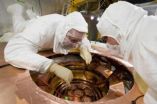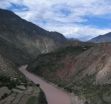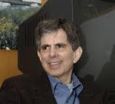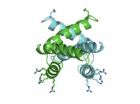(Press-News.org) Physicist Richard Schnee hopes to find traces of dark matter by studying particles with low masses and interaction rates, some of which have never been probed before.
The ongoing search for invisible dark matter is the subject of a recent article involving physicists from Syracuse University's College of Arts and Sciences.
Research by Richard Schnee, assistant professor of physics, is referenced in Symmetry magazine, a joint publication of the Stanford Linear Accelerator Center in Palo Alto, Calif., and Fermilab in Batavia, Ill.
"Scientists looking for dark matter face a serious challenge, in that no one knows its properties," says Schnee, also principal investigator of the Cryogenic Dark Matter Search (CDMS) Physics Lab at SU. "Experiments have seen no signs of dark matter particles that have high masses, but a few experiments have claimed hints of possible interactions from dark matter particles with low masses."
An expert in particle physics, Schnee hopes to find traces of dark matter with an experiment that is more sensitive to such low-mass dark matter particles.
He and his postdoctoral research associate, Raymond Bunker, are part of a multinational team of scientists working on SuperCDMS, an experiment in the University of Minnesota's Soudan Underground Laboratory that is designed to detect dark matter. (In addition to leading part of the experiment's data analysis, Bunker helped edit a paper about the experiment that has been submitted to Physical Review Letters.) Schnee's team is rounded out by two graduate students: Yu Chen and Michael Bowles.
Although dark matter has never been seen directly, it is thought to be six times more prevalent in the universe than normal matter.
"Everywhere we look, objects are accelerating due to gravity, but the acceleration is too large to be caused by only the matter we see," Schnee says. "Even more remarkably, we can infer that this extra dark matter is composed not of normal atoms, but other kinds of particles."
Scientists believe the mystery particles are WIMPs (Weakly Interacting Massive Particles), which travel at hundreds of thousands miles per hour through space and shower the Earth on a continuous basis. Unlike normal matter, WIMPs do not absorb or emit light, so they cannot be viewed with a telescope.
"Spotting the occasional WIMP that interacts with something is extremely challenging because particle interactions from natural radioactivity occur at a much higher rate. Detecting a WIMP is like spotting a needle in a haystack," Schnee continues.
Enter CDMS, whose hyper-sensitive detectors can differentiate between rare WIMP interactions and common ones involving radioactivity. The size of a hockey puck, a CDMS detector is made up of a semiconductor crystal of germanium that, when cooled to almost absolute zero, can detect individual particular interactions.
The presence of layers of Earth--like those at the Soudan lab--provide additional shielding from cosmic rays that otherwise would clutter the detector, as it waits for passing dark matter particles.
"We cool our detectors to very low temperatures, so we can detect small energies that are deposited by the collisions of dark matter particles with the germanium," says Schnee. "Other materials, including argon, xenon, and silicon, are also used to detect low-mass dark matter particles. We need to consider as many materials as possible, along with germanium."
SU is one of 14 universities working collaboratively in the search for WIMPs. In the Physics Building, Schnee and his team have constructed an ultra-low radon "clean room," in hopes of reducing the number of interactions from radioactivity that look like WIMPs. (Alpha and beta emissions from radon, a type of radioactive gas, can mimic WIMP interactions in a detector.)
"Unfortunately, radon is all around us, so, even with this 'clean room,' some radon-induced interactions will still mimic WIMPs," Schnee says. "All of us are building different types of detectors and are constantly improving our methods, in hopes of spotting WIMP interactions."
INFORMATION:
Housed in The College, the Department of Physics has been educating students and carrying out research for more than 125 years. Graduate and undergraduate opportunities are available in fields ranging from biological and condensed matter physics, to cosmology and particle physics, to gravitational wave detection and astrophysics.
SU plays key role in search for elusive dark matter
Physicist Richard Schnee hopes to find traces of dark matter by studying particles with low masses and interaction rates, some of which have never been probed before
2014-04-10
ELSE PRESS RELEASES FROM THIS DATE:
SU geologists prove early Tibetan Plateau was larger than previously thought
2014-04-10
Earth scientists in Syracuse University's College of Arts and Sciences have determined that the Tibetan Plateau—the world's largest, highest, and flattest plateau—had a larger initial extent than previously documented.
Their discovery is the subject of an article in the journal Earth and Planetary Science Letters (Elsevier, 2014).
Gregory Hoke, assistant professor of Earth sciences, and Gregory Wissink, a Ph.D. student in his lab, have co-authored the article with Jing Liu-Zeng, director of the Division of Neotectonics and Geomorphology at the Institute for Geology, ...
SU professors test boundaries of 'new physics' with discovery of 4-quark hadron
2014-04-10
Physicists in Syracuse University's College of Arts and Sciences have helped confirm the existence of exotic hadrons—a type of matter that cannot be classified within the traditional quark model.
Their finding is the subject of a forthcoming article, prepared by the Large Hadron Collider beauty (LHCb) Collaboration at CERN in Geneva, Switzerland. (LHCb is a multinational experiment, designed to identify new forces and particles in the universe.) Tomasz Skwarnicki, professor of physics, is one of the paper's lead authors.
"We've confirmed the unambiguous observation ...
ACP offers policy recommendations for reducing gun-related injuries, deaths in US
2014-04-10
April 10, 2014 -- A new policy paper from the American College of Physicians (ACP) offers nine strategies to address the societal, health care, and regulatory barriers to reducing firearms-related violence, injuries, and deaths in the United States. Reducing Firearm-Related Injuries and Deaths in the United States is published today in the peer-reviewed medical journal, Annals of Internal Medicine.
Principal among ACP's nine strategic imperatives is the recommendation to approach firearm safety as a public health issue so that policy decisions are based on scientific ...
Single mothers don't delay marriage just to boost tax credit, study says
2014-04-10
MADISON, Wis. – When the Earned Income Tax Credit was expanded in 1993, supporters hoped it would reward poor parents for working while critics feared that it might discourage single mothers from marrying or incentivize women to have more children to boost their tax refund.
A new collaborative study done by the University of Wisconsin-Madison and Cornell University reveals the EITC has helped the working poor but hasn't affected personal choices.
Sarah Halpern-Meekin, assistant professor of human development and family studies and affiliate of the Institute for Research ...
Antennae help flies 'cruise' in gusty winds
2014-04-10
Due to its well-studied genome and small size, the humble fruit fly has been used as a model to study hundreds of human health issues ranging from Alzheimer's to obesity. However, Michael Dickinson, Esther M. and Abe M. Zarem Professor of Bioengineering at Caltech, is more interested in the flies themselves—and how such tiny insects are capable of something we humans can only dream of: autonomous flight. In a report on a recent study that combined bursts of air, digital video cameras, and a variety of software and sensors, Dickinson and his team explain a mechanism for ...
Enzyme revealed as promising target to treat asthma and cancer
2014-04-10
In experiments with mice, Johns Hopkins Kimmel Cancer Center scientists have identified an enzyme involved in the regulation of immune system T cells that could be a useful target in treating asthma and boosting the effects of certain cancer therapies.
In research described online April 6 in Nature Immunology, the investigators show that mice without the enzyme SKG1 were resistant to dust mite-induced asthma. And mice with melanoma and missing the enzyme, developed far fewer lung tumors—less than half as many—than mice with SKG1.
"If we can develop a drug that blocks ...
Researchers discover possible new target to attack flu virus
2014-04-10
Scientists at The University of Texas at Austin have discovered that a protein produced by the influenza A virus helps it outwit one of our body's natural defense mechanisms. That makes the protein a potentially good target for antiviral drugs directed against the influenza A virus.
Better antiviral drugs could help the millions of people annually infected by flu, which kills up to 500,000 people each year.
When an influenza virus infects a human cell, it uses some of the host's cellular machinery to make copies of itself, or replicate. In this study, the researchers ...
For sick, elderly patients, surgical decision making 'takes a village'
2014-04-10
Surgical decision making for sick, elderly patients should be orchestrated by a multidisciplinary team, including the patient, his or her family, the surgeon, primary care physician, nurses and non-clinicians, such as social workers, advocates Laurent G. Glance, M.D., in a perspective piece published in the New England Journal of Medicine.
For this group of patients, surgery can be very risky. Glance, professor and vice-chair for research in the Department of Anesthesiology at the University of Rochester School of Medicine and Dentistry believes a more patient-centered, ...
Medicare's flawed adjustment methodology poor way to spend billions
2014-04-10
Lebanon, N.H. (April 10, 2014) – The methodology Medicare uses to adjust the billions of dollars it pays health plans and hospitals to account for how sick their patients are is flawed and should be replaced, according to a new study by Dartmouth investigators published in the journal BMJ that weighed the performance of Medicare's methodology against alternatives.
The researchers from the Dartmouth Atlas Project compared Medicare's current risk-adjustment methodology, which is based on the diagnoses recorded in patients' claims records, against adjustment indices based ...
American College of Physicians releases policy paper on medical liability crisis
2014-04-10
Washington, DC, April 10, 2014 -- The American College of Physicians (ACP) today released a policy paper on the medical liability crisis, which continues to have a profound effect on the medical system. "Medical Liability Reform—Innovative Solutions for a New Health Care System" provides an update of the medical liability landscape, state-based activity on medical liability reform, and summarizes traditional and newer reform proposals and their ability to affect system efficiency and encourage patient safety.
"While medical liability premiums have leveled off in the ...
LAST 30 PRESS RELEASES:
iPS cells from dish to freezer and back
Deep neural networks enable accurate pricing of American options under stochastic volatility
Collective risk resonance in Chinese stock sectors uncovered through higher-order network analysis
Does CPU impact systemic risk contributions of Chinese sectors? Evidence from mixed frequency methods with asymmetric tail long memory
General intelligence framework to predict virus adaptation based on a genome language model
Antibiotic resistance is ancient, ecological, and deeply connected to human activity, new review shows
Vapes, pouches, heated tobacco, shisha, cigarettes: nicotine in all forms is toxic to the heart and blood vessels
From powder to planet: University of Modena engineers forge a low-carbon future for advanced metal manufacturing
Super strain-resistant superconductors
Pre-school health programme does not improve children’s diet or physical activity, prompting call for policy changes, study finds
Autumn clock change linked to reduction in certain health conditions
AI images of doctors can exaggerate and reinforce existing stereotypes
Where medicine meets melody – how lullabies help babies and parents in intensive care
We may never be able to tell if AI becomes conscious, argues philosopher
AI video translation shows promise but humans still hold the edge
Deep ocean earthquakes drive Southern Ocean’s massive phytoplankton blooms, study finds
Without campus leftovers to pick through, the beaks of this bird changed shape during the pandemic
High-dose antibiotic does not reduce mortality in tuberculous meningitis
How many insects fly in the sky above the USA?
Could cheese protect your brain health?
Who faces more difficulty recovering from stroke?
Colliding galaxies create the brightest, fastest growing black holes at their center
New BrainHealth research reveals tradeoffs on sleep with cannabis use for chronic pain
Aging-US now on ResearchGate, enhancing visibility for authors and readers
'Molecular glue' stabilizes protein that inhibits development of non-small cell lung cancer
Mount Sinai Health System is recognized in 2025 Chime Digital Health Most Wired survey
From prey to predator: How carnivores spread beneficial fungi
Menopause symptoms may be frequent and have negative effects, according to female endurance athletes
US Congressmembers’ responses on X to mass shooting events differ along party lines
KAIST-UEL team develops “origami” airless wheel to explore lunar caves
[Press-News.org] SU plays key role in search for elusive dark matterPhysicist Richard Schnee hopes to find traces of dark matter by studying particles with low masses and interaction rates, some of which have never been probed before



